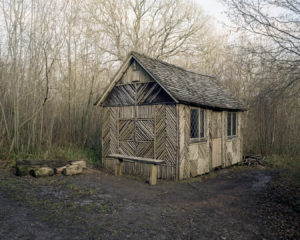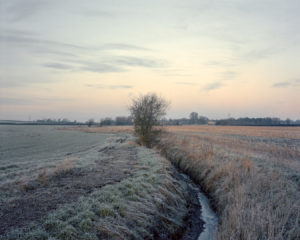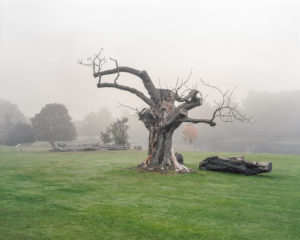THE LOST FOREST CHRONICLES

Based on a true story….
An ongoing project begun in 2013 to re-discover and re-imagine a once royal forest, Braydon in North Wiltshire, and associated entities. Retracing and walking their ancient *boundaries, along the way telling their story, making images in response to topography, social history and to place, exploring what was considered permanence in the landscape by our ancestors; dating back as far as written records can take us. Through retracing boundary records over a 1300-year period, acts of walking those boundaries are then made – **perambulations – to both reassert the boundaries existence, but to also examine our impacts on the land over that time.
Through the process of physically walking these boundary lines we are invited to re-imagine the connections and relevance our ancestors placed on the land. The boundary references give us a glimpse of how the landscape may have looked, features that were often considered so permanent that they would serve as markers for future generations. The meander of a watercourse, naturally forming pools, the subtle rise of land into a ridge, a dominant ash or oak tree breaking the skyline; also, often a night time navigational aid, a humble thorn-tree; able to live a thousand years. A time when the land itself first defined boundary, around which societies and cultures developed and fought – acts that continue to play out today, with the land itself as the currency.
From walking along river banks or through a still existing woodland named in a boundary survey, we can be certain of a lineage of these places back to the emergence of the land from beneath the glaciers as they retreated, and the land drained from the last ice-age. But, not only can we explore the land, there are characters at play here. Personal named features abound in these boundary surveys. Individuals that lived, played, worked, fought and died here. As we walk, we walk upon the graves of others, often unknowing as nature reclaims or man paves over. Change is clear, but even when we walk through the modern environment, we can understand how these places were used by deciphering their names – Sparcells housing estate, from Old English ‘spers’ & ‘holt’: wood where spear-shafts were obtained.
Through this process we can conjure up former worlds, future worlds, imaginary worlds, as we perform the act of walking. Worlds and stories that we need to look no further than outside our own front doors to find and create.
Using the documented records; charters and perambulations, dating back to AD 796 my journey includes the edgelands, suburbs and industrial estates of Swindon, through sculpted parklands, into the pastoral North Wiltshire landscape, visiting ancient towns and villages, and finally to the heart of the old forest.
“We cannot expect always to understand both the literal meaning and the significance of words used a thousand years ago, but if we can adjust them to a meaning which is still significant of the unchanging land, that adjustment will be a right one.” T. R. Thomson (Noted Wiltshire based Victorian era historian)
For me, there is something poetical, even artistic, of the use of the language in the charters, a rhythm, a connectedness of human spirit and the land. It is for this reason, in exploring my interests in one small part of England, I chose opus to describe the collected works in The Lost Forest Chronicles body of work.
THE CHAPTERS
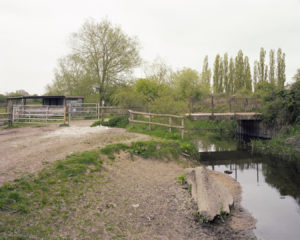
Chapter IV (wip)
A perambulation of the disafforestation of
Braydon Forest – AD 1300
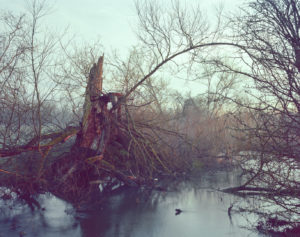
Chapter V (wip)
A survey of
Duchy Land – AD 1591

Chapter VI (wip)
Where three boundaries meet
Trifinium
FIELD NOTES
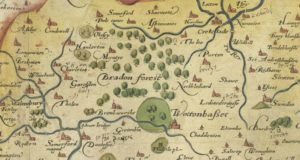
Extract from 1576 Wiltoniae Comitatus map (© British Library)
*Anglo-Norman law
‘Forests must be mered and bounded with unremoveable Marks, Meres and Boundaries, either known by matter of Record or by Prescription … as if they were enclosed with a Wall’
Name origin of Braydon
‘the widespread district in which wild animals abound’
bra from ‘Broad, wide’
den from AS ‘a lair or covert of wild animals’
Years mentioned:
Bradon 688 (c. 1125)
Braden 796 (14th), 1240, 1328
Bradene 905, c. 925, 956, 922 to 1321
Brædene 905, c. 1100
Brædne 1272
Braddene 1311, 1316, 1424
Braydon 1589, 1634, present Parish name
**Definition of PERAMBULATE
Noun:
1. a walk around a territory (a parish or manor or forest etc.) in order to officially assert and record its boundaries
2. a leisurely walk (usually in some public place)
Verb:
(used with object), perambulated, perambulating.
1. to walk through, about, or over; travel through; traverse.
2. to traverse in order to examine or inspect.
(used without object), perambulated, perambulating.
3. to walk or travel about; stroll.
Definition of (DIS)AFFOREST
Disafforest
Verb:
1. English law – to reduce ( land) from the status of a forest to the state of ordinary ground
2. to remove forests from (land)
Afforest
Verb:
1. To plant trees on; convert into forested land

